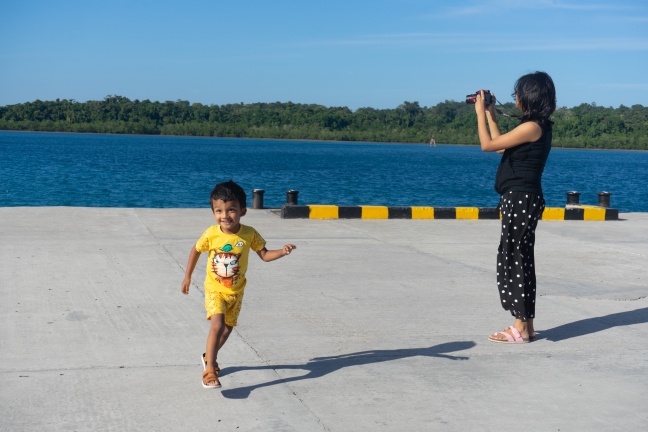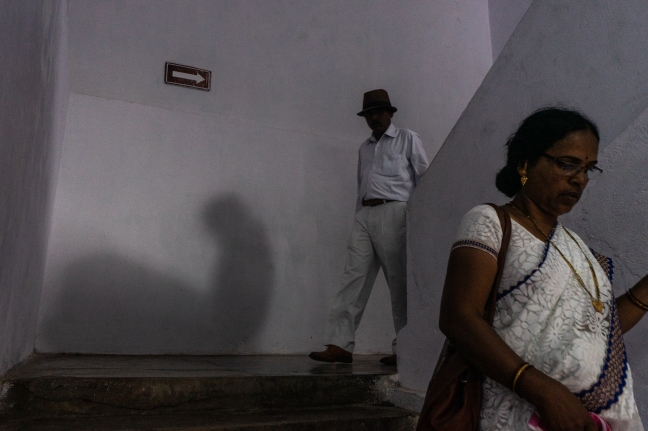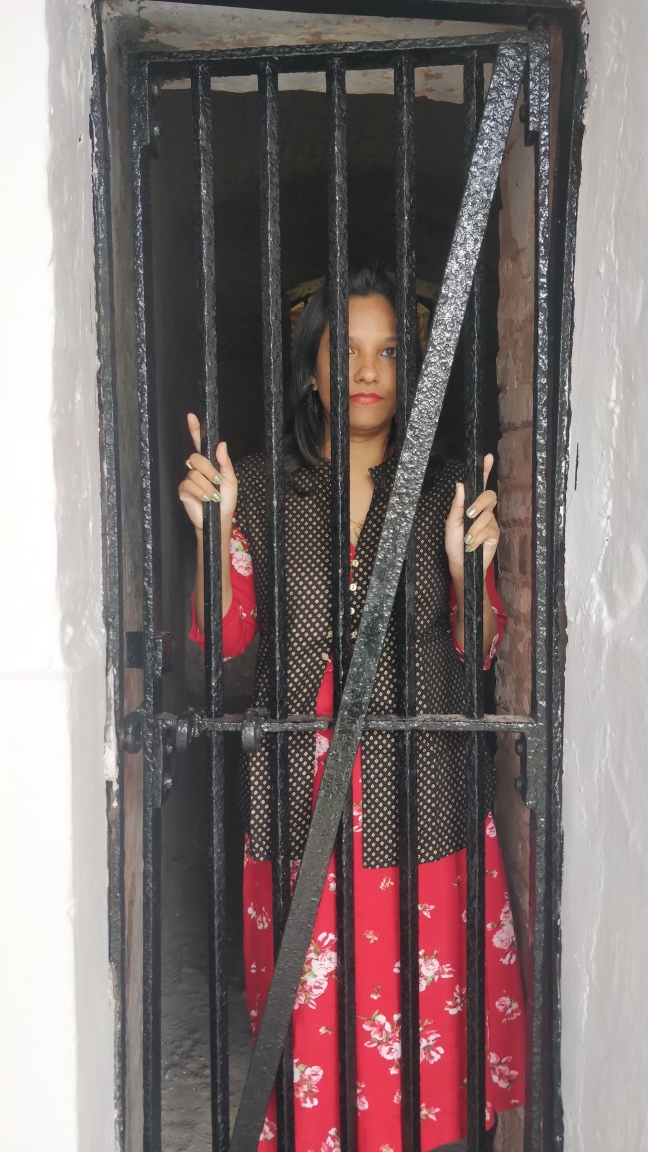PROBLEM STATEMENT

Picture Courtesy : Alankrita Singh
The Female Labour Force Participation (FLFP) has been consistently declining in India in the past 3 decades despite the nation being on a growth trajectory in this duration. This has attracted a lot of international attention and studies have attempted to decipher the reasons behind this phenomenon.
Apart from social structural inequalities in the Indian society, lack of basic infrastructure like safe…last-mile public transport options and safe and accessible public spaces are being considered important reasons for the same. (14)
According to ‘Safe Cities Global Initiative’ of the UN Women (5), Sexual Harassment in Public Spaces is an under recognised global pandemic. To quote from their report, “In New Delhi, a baseline study conducted in 2012 reveals that 92 per cent of women experienced some form of sexual violence in public spaces in their lifetime, and 88 per cent of women experienced some form of visual and verbal sexual harassment (unwelcome comments of a sexual nature, whistling, leering or making obscene gestures) in their lifetime.”
Roads (50%) and Public Transport (39%) are listed as most unsafe Public Spaces, which are followed by markets (22%) and spaces where women wait for public transport (12%). Factors contributing to the lack of safety include lighting on the streets, poorly maintained, non-existent pavements, and poorly designed men‘s urinals. (17)
“Safety, or the lack of it, has concrete consequences on the lives of people. For instance…harassment of girls in their neighbourhoods, on the way to the school, and in buses leads to their dropping out of school…curtail(ing) the movement of women in the city, their work and their education – their complete participation in city life [Andrew 2000; Moser 2004; Whitzman 2002b].” (3)
From my own personal experiences, one of them penned down in testimonial-1, I can say that actual experiences of sexual harassment are on one hand and on the other is the perpetual fear of harassment lurking in your mind. Secondly it is difficult to report these instances as there is fear of victim shaming and there are no easily accessible mechanisms for reporting.
Whether the Police Organisation would prioritise the safety and security of women; to unleash their economic, social and political potential; to enable them to be a part of the urban growth story of India, is a Strategic Leadership Question before the Police Organisation. Technology is predictably a key tool to bring about a transformation.
LEVERAGING TECHNOLOGY
To address sexual harassment of women and girls in public spaces in cities, I am proposing two specific solutions that leverage available technology and hold potential for empowering women in their own safety. From the perspective of Police, the first solution is in the realm of prevention and the second in redressal processes.
It is important to understand that technology is merely a means. Desired ends can be achieved only through organisational commitment to them. Targeting deep seated attitudes, as reflected in the news, would require the Leadership and Change Management.
I. Paradigm shift from Reactive Approach to Proactive Approach:
The 2012 Gang Rape in Delhi served to highlight the fact that Police response to sexual violence in cities has remained confined to being reactive rather than pro-active.
Proactive tackling of sexual violence on streets is a complex issue requiring longterm and sustained engagement with multiple stakeholders particularly the women navigating a city.
However, there have been some efforts in different states like the 1090 Power Angels of Uttar Pradesh (18), the She-Teams of Andhra Pradesh (19) Scooter Patrols by Women Police Officers of Jaipur (20), just to name a few. But these have rather been city specific, piecemeal and have had the limitation of being officer or personality centric. Some other attempts like ‘Anti-Romeo Squads’ have even been questioned for their methods, intent and legality (21).
With increasing access to internet and mobile phones certain mobile app based safety solutions have emerged in specific cities in India. The most prominent examples are Safetipin and Safecity with their comprehensive presence in New Delhi. Though, MHA, some state governments and certain Police Commissionerates have also launched safety apps for women with an emergency alarm linked to the nearest Police Control Room.
Safetipin uses map and crowdsourced data to provide services like ‘safety ratings’, ‘safe routes’, unsafe ‘red spots’ and ‘track my route’. Their safety rating is an aggregation of certain indicators like lighting, visibility, people density, gender diversity, security and transportation and the information in this regard is provided by the app users.
Safecity provides a platform for sharing testimonials, instances of sexual abuse and blogs for exchange of ideas on the subject. Safecity also uses heat maps to pinpoint unsafe locations, but it is not limited to the online mode. There have been attempts to partner with local stakeholders and find locally relevant solutions. Solutions could be simple like painting a wall with graphics carrying subtle messages of women empowerment or pursuing with the authorities for placement of CCTVs or street lights. They also conduct awareness generation activities in unsafe hotspots.
These developments present a unique opportunity for the Police to bring about a paradigm shift from Reactive Approach to Proactive Approach. I propose a model for collaboration between the private players and the Police, utilising the strength of each.
First, the dynamic crowdsourced data being compiled by the apps is a definite strength of the private players. Using advanced analytics, Police can get valuable inputs regarding nature, broad trends, patterns, MO, spatial and temporal spread of offences against women and children. This can augment and corroborate Police’s own data sources like their PCRs and CCTNS. And this source produces data specific to sexual harassment in public places contributed by the concerned women.
Police, utilising their expertise in crime prevention and redressal can effectively utilise the above information for Decision Making. Placement of CCTVs and Street lights; where should patrolling be intensified and at what time of the day; where to provide the last mile connectivity; how to incorporate ‘Eyes on the street’, all can be done more scientifically and based on evidence.
Transposing the same on the Police Control Room data, Police can also identify the areas from where offences are not being reported at the PCR. Solutions may be devised to tackle the same. Reporting of offences feeds into prevention of recurrence of same instances at the same places by the same persons in future.
Second, the Police being the first responders, their PCR services may be made directly accessible to the app users by the integration of location and call details information of PCR vehicles with the app. In the ‘golden period’ this will enable the app user to connect with the nearest source of help in a distress situation.
Third, counselling services being the strength of the private players (this being a professional service, Police must desist from attempting the same), they must be in the forefront of providing counselling, medical support and legal aid to those who share their personal stories of harassment, while maintaining the confidentiality of the survivor. Social media experts may be engaged to provide training in safe access and use of social media. But, Police may participate with the private players in outreach and awareness programs in schools, colonies and slums.
Fourth, and most important, an online FIR registration mechanism must be integrated in the app. The PCR may be designated as a Police Station for the purpose. The PCR must provide phone call based assistance in online registration of FIR. If medical or other conditions require, the FIR registration must be delivered at the door steps of the victim.
The collaboration has the potential to empower individual women and provide them an agency in ensuring their own safety. Most importantly, this is a means of incorporating women’s voices, worldview and inputs in Urban Planning and making it Gender Inclusive. Such participatory and inclusive ways of working are likely to enhance trustworthiness of Police Organisation.
Note : For this model to be successful, selection of credible and competent private partners, trust building, laying down clear terms of engagement are essential.
Limitations : The solution merely enables women to make informed decisions as they navigate through the existing threats, rather than making the entire city safe for them. Therefore the proposal alleviates women’s condition in the present scenario rather than uplifting the overall women’s position in the society, which would require a large scale social change.
Another limitation is the access of technology, especially among women. Gender continues to constrain mobile phone ownership and, importantly, the migration to more advanced mobile phone technologies (smartphones) and services (mobile money and internet) (13).
Last and most important, excessive reliance on data may lead to errors and biases therefore the insights from data analysis need to be critically questioned and corroborated.
II. Paradigm shift from process centric to victim/survivor centric:
The Crime and Criminal Tracking Network and Systems (CCTNS) project was started by MHA in 2009. The CCTNS project seeks to integrate the Police data with other pillars of the criminal justice system namely- Courts, Prisons, Prosecution, Forensics and Finger Prints into a unified Integrated Criminal Justice System (ICJS).
As of November 2015, only 78% of the police stations are entering 100% FIRs through the CCTNS software. Progress of migration of investigative processes from paper to CCTNS is even slower and skewed statewise. (23)
For the slow progress on achieving the stated objectives of CCTNS (box), various reasons identified by police officers are listed in the box. All these issues can be resolved through better coordination and incentivisation of personnel. And this is not what I intend to focus on.
Digitisation of Police records is a given because well begun is half done. My proposal focuses on a paradigm shift in CCTNS, from process centric to victim centric. Should the Police continue to function in old ways with respect to offences of sexual harassment in public spaces, and just do it digitally rather than on paper ?
How do we do this? We need to ask ourselves this question, “Why should the victim support the police and the prosecution?” How do we treat the victims as customers and ourselves as service providers. How do we provide Police Services at the door step of the victim? A whole change of mindset is required to do this. This is the Change Management that the Police Leadership needs to usher in.
As a woman who walks on roads and uses public transport, as a survivor of a sexual offence, as a client of the Police Organisation, I expect the following services when I decide to lodge a formal complaint-
1. Online registration of FIR and legal assistance if I am not aware of the legal procedures.
2. Copy of FIR to be provided to me on email
3. Timely intimation through email- of dates and venue for medical examination, court appearances or visit of police officials for recording of statement.
4. Email information regarding credible medical and counselling services.
5. Email information regarding my legal rights when interacting with doctors, magistrates, lawyers and Police.
6. Email information regrading victim compensation under the Central and State government schemes that I can avail, procedure to apply and to follow up, contact details of concerned officials.
7. Victim/witness protection programs if any.
8. Online registration of any further complaints in case I am threatened by the accused.
9. Guarantee of anonymity from media and from public in general.
10. Transparency, professionalism, expeditious investigation and trial
The information related documents can prepared by Police in collaboration with legal experts. Then all these can be built into CCTNS with use of modern applications. This would replace most of my direct interface with the Police Station and Police Officials with technological interface; minimise my secondary victimisation. Only then would I be able to overcome the trauma and harm done to me, be an informed and active participant in the process and fight my case with strength and dignity.
As an IPS Officer, I expect the following services when I supervise investigation of hundreds of cases of Sexual Harassment-
1. I should be able to choose a case file and have the steps of investigation arranged in a neat chronological table. Upon clicking on any one item int the table I should be able to expand the details.
2. I should be able to view an entire case file in terms of the check lists and SoPs that incorporate all relevant legal provisions in a specific kind of offence, eg. Acid attack, online harassment etc.
3. I should be able to deploy simple AI tools to analyse the entire investigation data. This could be to reveal trends in investigative processes being victim centric or not- across police stations, across investigating officers and across locations. Or trends in duration of investigation and trial; or trends in rate of conviction; and so much more.
This would enable me to effectively supervise and monitor the investigation processes, at the same time keeping the victim in focus.
CONCLUSION
Change Management is one of the most important functions of Leadership, more in the context of Indian Police Service which leads an organisation that was conceptualised and constructed by the colonial power. The transition from a colony to a democracy and welfare state has brought about many changes in the Police Organisation, but as far as stemming out gender, caste, religion and region based prejudices are concerned, as far as developing a modern egalitarian outlook is concerned, the progress has been rather slow, much to the disadvantage of the underprivileged.
As technology presents immense possibilities, it is time for the Police Leadership to take charge. We need to build in ‘Disruptions’ that challenge status quo to expedite the process of behaviour change and finally attitude change. Behaviour change has happened when each police officer cutting across levels says and does what he or she is supposed to and does not say or does what he or she is not supposed to; irrespective of his or her beliefs and attitudes. Attitude change has happened when they say and do the right thing and believe in it. As Police Leaders the IPS need to lead from the front.
References
1.https://www.theguardian.com/cities/2015/aug/13/can-the-safecity-app-make-delhi-safer-for-women
2. Author’s personal experience
3.https://www.epw.in/engage/article/how-do-we-help-women-navigate-cities-designed-men
4.https://yourstory.com/2018/07/gender-inclusive-urban-city-planning
5.https://www.unwomen.org/~/media/headquarters/attachments/sections/library/publications/2013/12/un%20women-evaw-safecities-brief_us-web%20pdf.ashx
6.https://www.washingtonpost.com/world/asia_pacific/its-not-easy-to-report-on-rape-in-india/2016/12/20/fab13528-c0b1-11e6-b527-949c5893595e_story.html
7.https://www.livemint.com/Politics/AV3sIKoEBAGZozALMX8THK/99-cases-of-sexual-assaults-go-unreported-govt-data-shows.html
8. https://indianexpress.com/article/india/priyanka-gandhi-posts-video-of-woman-being-panned-by-policeman-while-filing-eve-teasing-complaint-5851331/
9.https://www.indiatoday.in/india/story/teenage-girl-commits-suicide-up-hardoi-eve-teasing-complaint-1552246-2019-06-19
10.https://www.washingtonpost.com/world/asia_pacific/an-indian-gang-rape-victim-went-to-court-for-11-years-but-her-ordeal-continues/2016/08/15/c92075ce-5757-4073-b8c2-b0dc42f54ed0_story.html
11.http://www.ihdindia.org/hdidelhi/pdf/Crime_against_Women_and_Children_in_Delhi.pdf
12.https://indianexpress.com/article/india/priyanka-gandhi-posts-video-of-woman-being-panned-by-policeman-while-filing-eve-teasing-complaint-5851331/
13.https://pathwayscommission.bsg.ox.ac.uk/sites/default/files/2019-09/the_mobile_phone_revolution_and_digital_inequality.pdf
14.https://yourstory.com/2018/01/women-in-workforce
15.http://documents.worldbank.org/curated/en/559511491319990632/pdf/WPS8024.pdf
16.https://www.merriam-webster.com/dictionary/intersectionality
17. http://www.jagori.org/publication/draft-strategic-framework-women’s-safety-delhi-2010
18. http://www.newindianexpress.com/nation/2015/apr/27/Power-Angels-to-Protect-Women-747608.html
19.https://www.thenewsminute.com/article/5-years-she-teams-look-telangana-s-pioneering-women-s-safety-initiative-109918
20.https://www.huffingtonpost.in/2017/05/01/jaipur-to-get-own-version-of-anti-romeo-squads-soon-with-women-p_a_22063027/?utm_hp_ref=in-anti-romeo-squads
21.https://thewire.in/women/ups-anti-romeo-squads-are-doing-the-opposite-of-what-theyre-supposed-to
22.https://mha.gov.in/sites/default/files/CCTNS_Briefportal24042018.pdf
23. http://mha.nic.in/sites/upload_files/mha/files/AllStates7thJan2016. pdf






























 Picture Courtesy : Author
Picture Courtesy : Author













